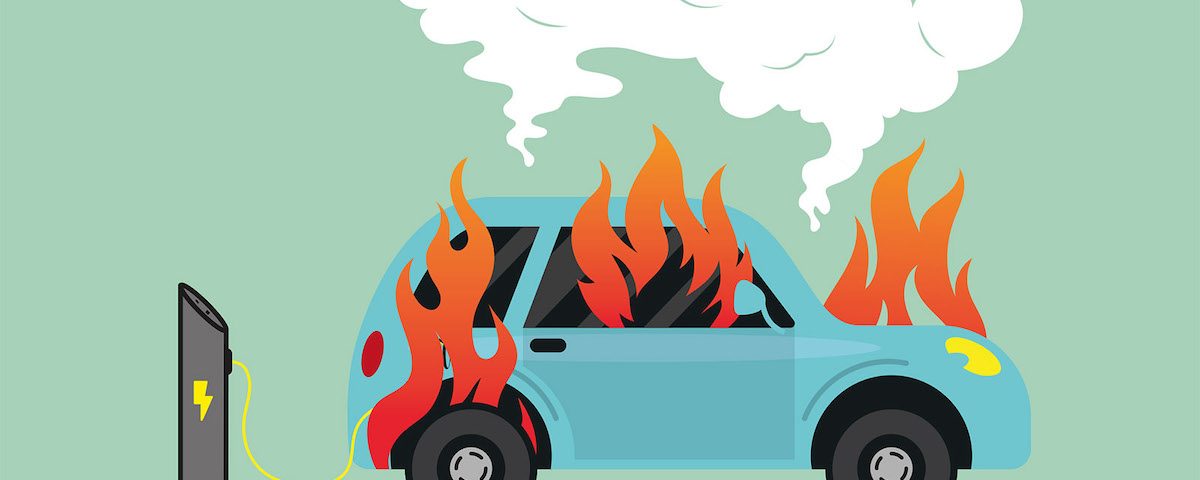EV Charging: A Risk Management Guide

Risk Management Insights
18th July 2023
National Risk Register 2023
3rd August 2023Good morning and welcome to our Horizon Scanning newsletter.
This month, we look into the rapidly evolving landscape of electric and hybrid vehicles, addressing one key question: what are the risk factors associated with using and charging these vehicles, and how can you manage them effectively?
As the shift towards greener modes of transportation accelerates, electric vehicles (EVs), including motorbikes, cars, mobile plants and even smaller devices like scooters and pedal cycles, are becoming increasingly commonplace. The variety of EV types – battery electric vehicles (BEVs), hybrid electric vehicles (HEVs), mild electric hybrid (MHEVs), plug-in hybrid electric vehicles (PHEVs), and hydrogen fuel cell electric vehicles (FCEVs) – continue to proliferate as technology advances and the reliance on internal combustion engines diminishes.
While the rise of EVs is promising for our environmental goals, it presents new challenges in risk management, particularly in relation to property and infrastructure. Central to these challenges is the usage of high-voltage lithium-ion batteries for energy storage in most EVs. Though this technology continually advances, it comes with risks, including potential property damage, infrastructure harm, and even risks to life. EVs and their charging infrastructure can pose an ignition source and represent a large fire load, meaning a fire event can be severe, spread quickly and produce significant smoke.
An important thing to note is that many of the reported fires come after misuse or poor care/storage of the batteries. Also, several fires have been linked to batteries purchased 2nd hand or from unofficial sources.
Our In The News section has more insights and valuable free tools to help support your business.
Thanks for reading, and stay safe.
Horizonscan are experts in risk and resilience. Click here for more on what we do.
EV Charging: A Risk Management Guide
Understanding the Risks
While the shift towards greener transportation methods has benefits, it’s critical to comprehend the risks that come with it. All batteries – charging, in use, or idle – are energy storage devices with the potential to release their stored energy as fire or explosion, often without warning. One of the most common causes of battery fires and explosions is thermal runaway, a phenomenon that results from the battery generating more heat than it can dissipate. This process can lead to dramatic fire or explosion events, even with relatively small lithium-ion cells, like those found in hoverboards and vaping devices.
Thermal Runaway and Battery Fires: Thermal runaway is a phenomenon where an increase in temperature changes the conditions in a way that causes a further temperature rise, often leading to a destructive result. This is a common cause of fires in EV batteries, as heat generated inside the battery can sometimes be greater than the heat dissipating. The result is an uncontrolled increase in temperature which can lead to a fire or explosion, even in relatively small lithium-ion cells. This issue can arise due to battery damage, faults in the Battery Management System (BMS), or overcharging. It’s important to note that a damaged battery can initiate thermal runaway several hours after the incident, causing fires even after a vehicle has been inspected or repaired.
Hazardous Gas Release: Lithium-ion batteries contain a combination of potentially dangerous chemicals. An overheated battery or case of impact or fault can produce gases like hydrogen, methane, and oxygen, which may lead to battery rupture and cause fires or explosions. Furthermore, post-accident or post-impact damage assessment must consider the battery’s internal structure. Damage to the internal structure might not be immediately visible but can still result in thermal runaway, fire, or release of flammable substances from the battery.
High Voltage Hazards: The electrical systems on EVs are typically high voltage, which can pose risks of electric shock, especially during maintenance activities. Components of the vehicle could retain a dangerous voltage even when the vehicle is switched off or the battery is removed. Besides, magnetic forces within the electric motors may cause unexpected vehicle movement, posing further risks.
Charging Infrastructure Risks: There are various risks related to the charging infrastructure, such as the potential for slips, trips, and falls due to trailing charging cables, theft of cabling or charging equipment, and the risk of charging equipment not being fit for purpose or having poor quality arrangements.
Medical Device Interference: There exists the potential for the electrical systems of the EVs to interfere with medical devices such as pacemakers, which can pose a significant health risk to individuals reliant on such devices.
Environment Impact: Fires involving lithium-ion batteries produce hazardous by-products, including lithium hydroxide and hydrogen, which can harm the environment. Containment and control of fire water run-off is necessary to minimise this impact.
Understanding these risks and taking appropriate measures to mitigate them is critical for the safe and effective operation of electric and hybrid vehicles and their charging stations.
General Considerations
When it comes to installing chargers, several general considerations must be evaluated. From managing change, reviewing regulatory assessments, and inspecting newly installed chargers to considering the number and arrangement of charging bays, there is a multitude of aspects to address for effective risk management.
Additional points to remember include ensuring proper marking and signage for charging areas, protecting charging infrastructure from impact damage, keeping the charging area clear of combustible materials, and providing an emergency manual isolation switch in an accessible location. Regular visual inspections of charging areas are crucial to spotting damage, rust, or signs of vandalism and ensuring suitable access for the Fire and Rescue Service.
The Role of Business Continuity Planning
As part of your business continuity and emergency response plans, please consider contingencies for charger outages, the impact of EV chargers on your site fire strategy, and potential issues with site access in case of an EV fire. Understanding these risks and developing a comprehensive risk management plan will protect your property as we transition to an electrified future.
Business continuity planning plays a crucial role in the field of electric and hybrid vehicle charging property risk management. While the transition to these greener forms of transportation is becoming increasingly important, it’s equally critical to ensure that operations can continue smoothly during disruptions or incidents. Here are some ways in which business continuity planning could intersect with this subject:
Incident Response: In the event of a fire or explosion caused by an electric vehicle (EV) or charging station, a business continuity plan outlines the steps to ensure safety and minimise damage. This could include evacuation procedures, communication plans, immediate response measures, and liaising with emergency services.
Recovery Planning: Business continuity planning would also detail the steps to resume normal operations post-incident. This could involve repairing or replacing damaged charging infrastructure, re-establishing supply chains, returning displaced employees to work, and communicating with stakeholders.
Charging Infrastructure Outages: A key consideration for business continuity is handling potential charging infrastructure outages. Businesses need contingency plans for continued operations, whether due to technical faults, maintenance, or external factors like severe weather. This could involve temporary charging solutions, a rotational EV use schedule, or backup power solutions.
Cybersecurity: As EV charging stations are often connected and digitally managed, they can be cyber-attack targets. A business continuity plan should include cybersecurity measures, incident response, and recovery planning in the event of a breach.
Risk Assessment: Business continuity planning involves identifying potential risks and implementing measures to mitigate them. In the case of EV charging, this could include risks associated with battery failures, charging infrastructure, fire load, and even environmental factors.
Changes in Regulation and Technology: The EV charging industry is rapidly evolving in terms of technology and regulation. Businesses must ensure that their operations can adapt to these changes with minimal disruption, which can be achieved through effective business continuity planning.
In The News
There are several documents and resources relevant to the events we attended and spoke at, which might be worth browsing more fully:
- One dead after a ship carrying 3,000 cars catches fire off the Dutch coast
- E-bike/scooter fires – London Fire Brigade helpful information
- Document released to support safe handling and storage of EV batteries
- Emergency Preparedness (Taylor’s Version)
- Taylor Swift Seattle concert generates seismic activity
- New cyber security training packages launched to manage supply chain risk
Thought for the week:
It’s important to remember that Crises are often unexpected: Fires could come from EVs and lightning, Earthquakes from tectonic plates or overly excited Taylor Swift fans… So if your business is also in its “Resilience ERA”, update your BCPs and ER plans!
Stephanie Phelps – Resilience Consultant




